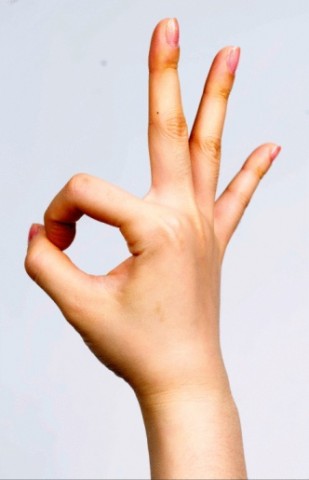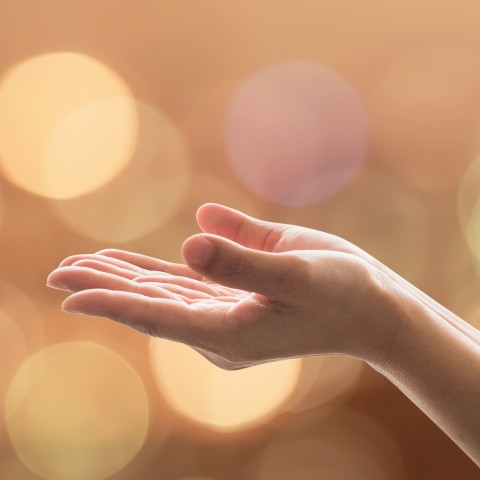
The art of body language is a powerful tool for decoding someone’s state of mind. In fact, gestures form a whopping 55% of total communication made by a person. Undeniably, it’s the most important type of nonverbal communication among human beings, which makes it important to learn gestures’ meaning in Hindi, as well as those in other languages and cultures.
Every country in the world has its own typical set of body language. In fact, a certain gesture in one country may give off a completely different meaning in another country. That’s what makes the whole genre of nonverbal communication so unique. In this article, we’ll be going over Hindi body language tips and more, because gestures when speaking in Hindi are of great importance. Start with a bonus, and download your FREE cheat sheet – How to Improve Your Hindi Skills! (Logged-In Member Only)
Table of Contents
- Importance of Indian Gestures: An Overview
- Understanding Indian Culture
- Common Gestures in Indian Society
- Study Indian Gestures and Phrases with HindiPod101.com
1. Importance of Indian Gestures: An Overview
Talking about gestures, Indian culture has a very diverse and rich history. Indians are quite emotional and expressive. That’s why body language in India comprises of many hand gestures and head nodding during a conversation.
The literal Hindi meaning of “gesture” is ‘हाव-भाव’ (haav-bhaav), whereas “body language,” meaning in Hindi is ‘शारीरिक हाव-भाव’ (saariirik haav-bhaav). Having trouble pronouncing these words? Start with our free lesson on basic Hindi pronunciation tips.
With different Hindi gestures, people also express their sense of basic emotions, such as respect, joy, wonder, sadness, or disappointment. Relying on various gestures in India for emotional expression is so much a part of our culture that we do it all the time without even noticing it. For example, in India, body language is a great way to find out whether someone is really into the conversation or not. The fact may surprise you, but in India, gestures and greetings are mostly followed by a variety of typical Hindi words.
And now that you’ve learned gestures’ meaning in Hindi, we invite you to visit our HindiPod101.com blog to learn more about Indian culture and diversity.
You can also check out a number of body language books in Hindi to get a glimpse into Indian non-verbal communication.
2. Understanding Indian Culture
Before we delve into the subject of body language in Hindi, here are some unspoken yet common etiquette rules to keep in mind when meeting with the native people socially:
- Hugging and Touching: As traditional values still hold a high place in Indian society, hugging and touching between opposite genders in public isn’t taken very well.
- Shoes and Footwear: You might also see people taking off their shoes before entering houses or the kitchen area.
Wearing footwear to any religious place is strictly a no-no. Whether you’re visiting a temple, mosque, or gurudwara, remember to take off your shoes before entering. - Eating Meals: It sounds like too much, but when visiting the country, eat your meals with your right hand. Using the left hand for meals is frowned upon, without exception.
Wondering about Indian food already? Check out the lip-smacking delicacies from Indian Cuisine. - Clothing: Lastly, people are also sensitive about what you wear and how you dress. However, this may not be the case when you’re in certain metropolitan cities.
But in small towns and streets, you’ll be more comfortable in an attire that properly covers your body and is not very revealing.
As you can see, there are some specifics you should understand about gesture meanings in Hindi. Read more on the Do’s & Don’ts in Indian society to make your stay easier and more culturally appropriate.
3. Common Gestures in Indian Society

In India, gestures reflect the state of mind. The moment you take your first step in this country, be ready to get pampered with lots of warmth and personal attention. Indian people leave no stone unturned when it comes to welcoming their guests.
While Indians expect their local gestures and phrases to be nothing less than a mind-wrenching riddle for a person who’s from a totally different part of the world, wouldn’t it be great to win their hearts with just a little bit of homework on your part?
And what better way to impress them than by showing your love with an Indian greeting gesture?
We’ll also teach you about some funny Indian gestures and what qualifies as rude hand gestures in India. Most gestures are okay to use in public as they show your positive involvement and respect. There are many body gesture meanings in Hindi, so we’ll do our best to cover these.
However, it’s better to avoid some forms of body language that may offend the other person. Even the native people stay clear of them.
So, let’s decode the most popular gestures and rules in the art of body language that India practices in its everyday life. Here are the most common body language gestures in Hindi!
1- Positive Gestures
Positive gestures are exchanged for sharing joy, positive vibes, and respect. All the positive gestures described below are completely okay to use in a public place.
1.) Joining Hands for Namaste
The first gesture we’re going to talk about is how to greet in Hindi. It’s also one of the most common hand gestures in Hindi.
- It’s called नमस्ते (NamaSTe) or नमस्कार (NamaSkaar).
- Whenever you meet an elder person or someone of the opposite gender, this is the perfect way to greet them.
- While saying नमस्ते (NamaSTe), join the palms of your hands, in such a way that they’re placed near your chest, then slightly bow your head with a gentle smile on your face.
Quick Tip
This gesture isn’t required when you’re meeting someone of your own age and gender. You can use a quick “hello” for them, as well as for kids.
Also keep in mind that in Hindu religion, the same hand gesture is used while praying to God.
2.) Touching the Feet of Elders
Elderly people who are either close relatives, or parents/grandparents of your friends and spouse, are usually addressed by touching their feet.
- It’s a symbol of your deep respect toward them, and is yet another way to express your gratitude for older people, where a simple नमस्ते (NamaSTe) wouldn’t suffice.
- The same gesture is also used to ask for their blessings.
- When meeting aged folks, stand at a comfortable distance.
- Slowly bend your upper body and touch their feet. While doing so, you should say प्रणाम (pranaam).
Quick Tip
The ideal way to do this is by using both hands. However, people aren’t that particular about it nowadays and this gesture can be seen using just one hand as well.
But one thing’s for sure: touching the feet is a sure shot way to melt their hearts!
3.) Blessing the Young Ones by Placing Your Palm on Their Head
Naturally, this comes as an immediate response to the gesture described above.
- The elders are supposed to lovingly touch the young ones by placing their palm on their head. By placing their palm, they intend to bless you with positive vibes as well as wish you joy.
- Usually, elderly people can be heard saying, जीते रहो (jiiTe raho) to males and जीती रहो (jiiTii raho) to females. The phrase means “have a long and satisfying life.”
Quick Tip
If someone younger is touching your feet, you should respond by doing this gesture.
In case you’re the one who’s touching the feet, wait for a second to allow them enough time so that they can bless you.
4.) Hugging
The hugging gesture is practiced by Indians as a tender display of affection. This is one of the most affectionate body language signs in Hindi.
- People hug their friends and cousins, those in the same age group, and those of the same gender.
- The elders shower their love by hugging their kids and grandchildren.
- Festivals like Holi and Eid are especially celebrated by hugging each other.
Quick Tip
While hugging, you can casually say, कैसे हो (kaiSe ho) to men and कैसी हो (kaiSii ho) to women.
Irrespective of the occasion and Indian traditions, we suggest that you don’t share a hug with the opposite sex.
5.) Saying “Wow” Using One Hand
In Hindi, hand gestures translate to हाथ के इशारे (haaTH ke isaare).
- The one we’re talking about now is a hand gesture that says “Wow!” or “Superb.”
- Hindi translations for these words are वाह! (vaah!) or ज़बरदस्त (zabaraDaST).
- The gesture is made by touching the tips of the index finger and the thumb so that it forms a circle.
Quick Tip
It’s a casual sign which serves the purpose of complimenting someone out of affection, and is usually exchanged between friends and couples.
The “Wow” sign is also used for praising someone’s picture on social media.
6.) Thumbs-Up
- This is a cool sign that confirms an approval, such as “We’re all set!” It’s also used to wish luck.
- It’s shared between classmates, often before exams, any competition, or a performance, in order to drive away nervousness.
- In short, with a “Thumbs-Up” sign, you’re saying “It’s going to be great!”
- The Hindi translation for the phrase is सब बढ़िया होगा (Sab badhiyaa hogaa).
7.) Subtle Nodding Along
- This is a non-verbal communication that’s really effective. It’s a delicate way of assuring the speaker that you’re listening intently.
- Nodding the head also stands as a symbol of your warmth and empathy toward the other person. You should also maintain eye contact (but not too much!) to establish trust. Eye contact meaning in Hindi can vary, but in this case it will be much appreciated.
- In such situations, you could always use Hindi phrases like, सही बात है (Sahii baaT hai) to say “That’s right” or expressions such as “Hmm” (हम्म [hmm]).
Quick Tip
This gesture is more powerful when it comes naturally to you. Indians are emotionally sensitive and thus their judgement depends quite a lot on nonverbal gestures.
If you have a rather cold or stern body language, they might interpret it as disinterest in the conversation. It’s good to keep warm facial expressions in Hindi conversation.
8.) Joining Palms Sideways When Prasad is Given
Joining palms is a hand gesture that’s displayed in particular situations only.
- With open palms facing upward, join them sideways.
- The palms should be gently curved so that anything offered doesn’t fall out of your hands.
- Your head should be slightly tilted forward.
Quick Tip
This gesture is a common sight in temples and places of worship. People use this hand gesture while accepting sacred offerings (usually something sweet) after the worshipping is over.
The sacred offering is known as प्रसाद (praSaaD).
It’s not advised to perform the gesture during normal meals.
2- Negative Gestures
Negative gestures are used in extreme conditions, but they’re better to stay away from in a public place.
1.) Showing the Slap Gesture
- The slap gesture is given with a tilted but straight and open palm.
- In India, parents often use this gesture to warn their mischievous kids, and adults use the slap gesture to threaten each other during a serious verbal fight.
- It’s more common to come up between two strangers as opposed to family members, as the gesture is too harsh to be practiced by adults within the family.
- It’s better to avoid using it at all costs.
2.) Little Finger for Taking a Pee
- Though not specifically Indian, raising a little finger means you urgently need to take a leak.
- Kids are most likely to use this with their parents to avoid embarrassment, especially in a public place or in front of guests, though adults also use it in their friend circle.
- Men use this gesture more than women.
- However, this gesture isn’t considered very polite. So skip it in the office or in front of your female friends.
3.) Side-to-Side Head Shaking for a “No”
- Indians aren’t offended by a “No.” Still, they could do with a slightly softer tone.
- Body language that involves clear hand movements and side-to-side head nodding is considered quite harsh.
- If possible, don’t be too direct in disagreeing with or rejecting an offer. Instead, go for gentler words that indicate your negation in a respectful way.
- Indians can quickly catch your “no” even when that word hasn’t even been uttered.
4.) Hands on Waist When Talking to Elders
Another posture that’s better to stay clear of is the “hands on waist” gesture.
- In plain words, it’s only offensive during an argument with your elders. In other cases, it’s quite a normal gesture.
- To be honest, a lot depends on the nature of the conversation. For instance, when talking to a friend or colleague about a neutral or pleasant topic, putting your hands on your waist indicates a sense of jolliness and frankness. It also shows that you’re enjoying the talk.
4. Study Indian Gestures and Phrases with HindiPod101.com
HindiPod101.com is a great platform to help you understand the rich and varied cultural habits of India, including the Hindi body language tips we went over in this article. Now, you can easily gain more command over the Hindi language while learning about different body gestures displayed in India and their meanings. Further, there’s also much to learn about Indian cuisine, festivals, and many survival phrases to be used in India.
For a foreigner, using these words may not come as easily as you would think. To understand Indian body language, Hindi knowledge becomes an inevitable prerequisite.
And for that, HindiPod101.com is here to help you with everything you need, from getting familiar with Hindi alphabets to free tutorials on Hindi grammar.
Having acquired a command over the simple words and phrases used in Hindi language, things will become less complicated from there on.
For a more effective and enjoyable experience with us, allow us to introduce you to the remarkable top 10 language learning strategies. Not only that, but you’ll also love to try these 15 easy ways to access HindiPod101 for free!
Need any help? Visit our help center for easy access to HindiPod101.com. Start with a bonus, and download your FREE cheat sheet – How to Improve Your Hindi Skills! (Logged-In Member Only)




















